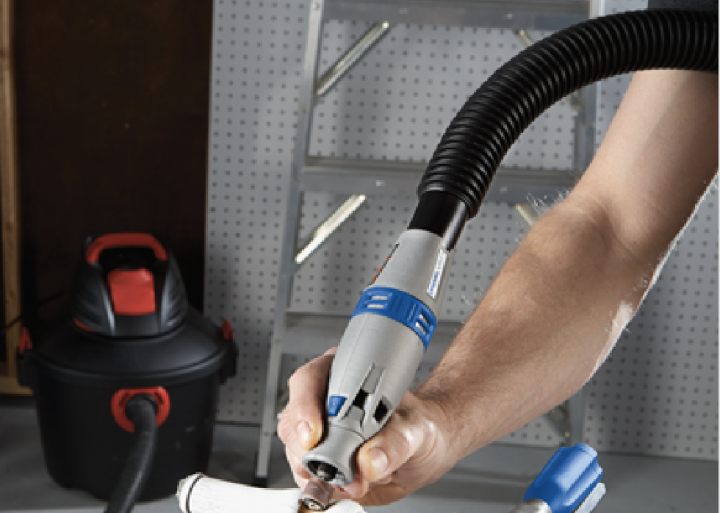
According to the VRT 1’s description on Dremel’s website, “The suction of the vacuum powers the rotary tool and cleans debris at the same time making the Dremel VRT1 the ideal rotary tool for users wanting to keep their workplace clean and airborne dust to a minimum.” The clever device, which actually first debuted in June, is currently available both at Lowe’s and on the Dremel online store. But be warned, the only review available on the site gives it just one star (though there’s no elucidation as to what the poor VRT 1 did to earn such a disastrous rating).
Dremel claims that the multifunctional and motorless device can be used for a wide range of projects, what with its “sanding, polishing, carving, drilling and engraving accessories to complete these applications and more.” Best suited for “small and dusty projects,” the tool company promises that the device’s speed control feature allows “greater tool versatility and adjustment of accessory speed” and further asserts that it’s “compatible with most Dremel rotary tool accessories.”
The fine print notes that you’ll need a wet/dry vacuum with a CFM of 110 or greater, and that you’ll ultimately attain power similar t a 4.8V cordless rotary tool. That being said, Dremel admits, “Operations such as grinding, wire brushing, or cutting-off are not recommended to be performed with this power tool.”
So while it may not be the ideal go-to handyman gadget for more serious projects, it’ll do the trick for your lighter-lift DIY endeavors. And hey, if nothing else, you get to say that your vacuum does a whole lot more than eat dust — it helps a power tool get the job done.
Editors' Recommendations
- Microsoft reveals the brand new look of the Windows 11 Snipping Tool
- The best new robot vacuums of CES 2021
- Roborock’s new robot vacuum packs a pair of cameras to avoid obstacles
- Eufy continues its assault against established brands with its new vacuums
- New Ecovacs Deebot Ozmo models vacuum and mop with multi-floor mapping


